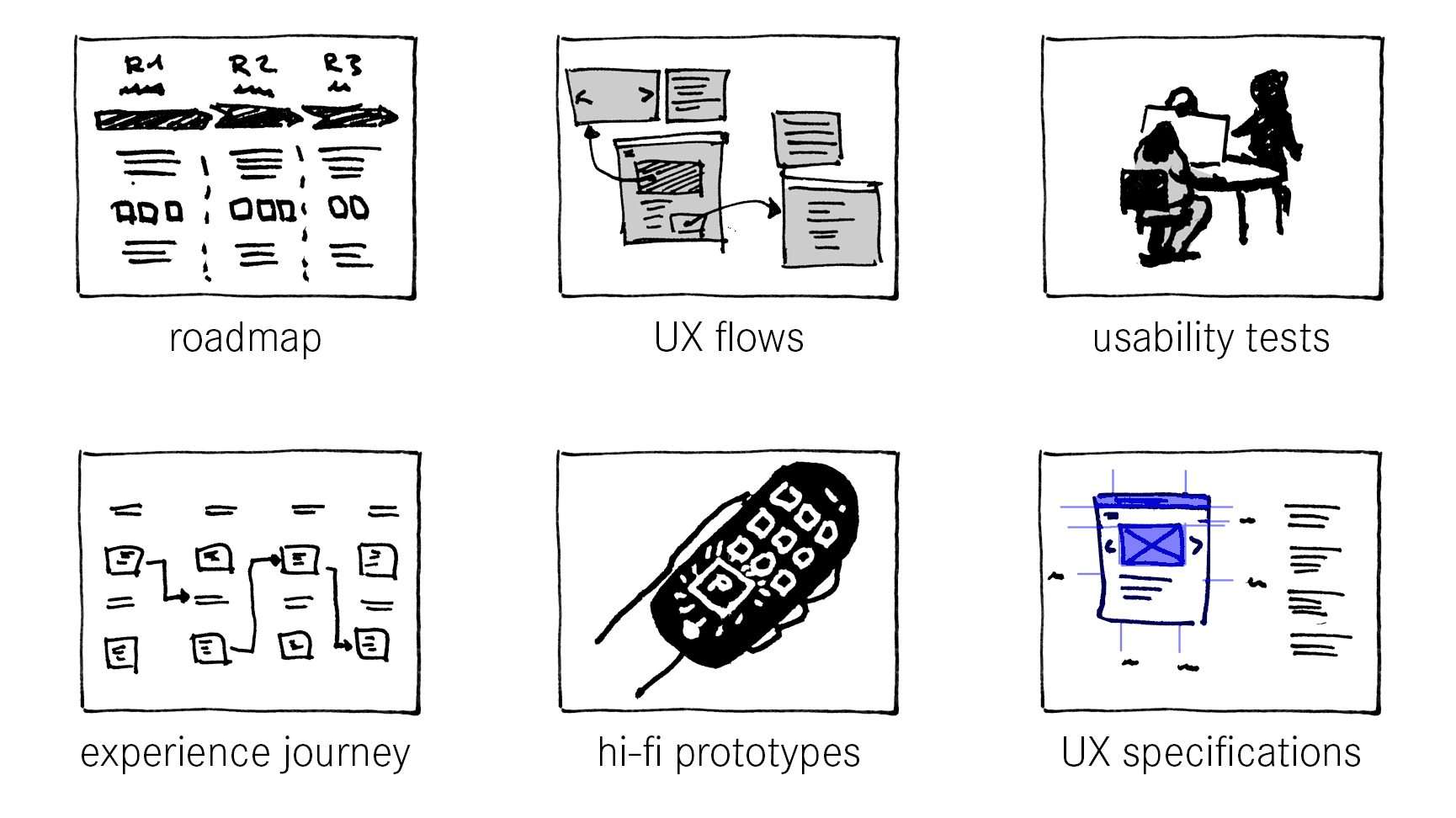Mind the Gap follows a user-centered, collaborative and iterative design process. This approach helps us create new and compelling solutions which are useful for the target audience and are unique among the competition, while being feasible to implement and fitting the business objectives.
EXPLORE
Each project starts with a new challenge, which we approach with an open, engaged and empathetic mindset. In the exploration phase we aim to gain a thorough understanding through investigating the problem space from different perspectives: users, business, and technology. With this we can pinpoint the target users, user needs, business objectives and technology opportunities. The result of this phase is a creative brief which synthesizes all the research findings to inform the subsequent design activities.

Methods: Field Research, Inspirational Research, Trend Analysis, Competitive Analysis, Technology Deep-dive, Participatory Design, Expert Interviews, Stakeholder Interviews, User Needs, Customer Journeys, Design Themes Partners: Product owners, user researchers, strategists and senior technologists Deliverables: Research Summary, Design Brief
EXPERIMENT
Finding the best design strategy and user experience for a new service or product is the objective of the experimentation phase. We explore different ideas and directions at a big-picture level, and conduct guerrilla-style concept tests to challenge and improve the designs. The outcomes of this phase are tangible design concepts which illustrate how we propose to realise the set ambition.

Methods: Ideas, Mood boards, Concept Definition, User flows, Storyboards, Service Blueprints, Wire frames, High-level IAs, Prototypes, Concept Tests Partners: Product owners, visual designers, product designers and developers for rapid prototyping Deliverables: Concept Presentation, Wireframes, IA, Visual Mock ups, Concept Movie, Simulations, Lo-fi prototypes
EXPERIENCE
Refining and detailing the design is the focus of the experience phase. In this phase we follow an agile design and development approach, and collaborate closely with the development team. We conduct user tests on a regular basis to review the designs and implementation. Results are detailed wireframes, visual design compositions and assets, prototypes and design specifications.

Methods: Backlog, Use Cases, Scenarios, Feature Roadmap, Wireframes, Information Architecture, UI flows, On-OS Prototypes, Usability Tests, Expert Reviews, UX Specifications, Visual Specifications, Asset Libraries Partners: Product owners, visual designers, software developers, product designers, engineers and usability testers Deliverables: Wireframes, IA, Visual Mock ups, User Experience Specifications, Prototypes, Asset Library
- User Research
- Design Thinking
- User Centred Design
- User Experience Design
- Interaction Design

